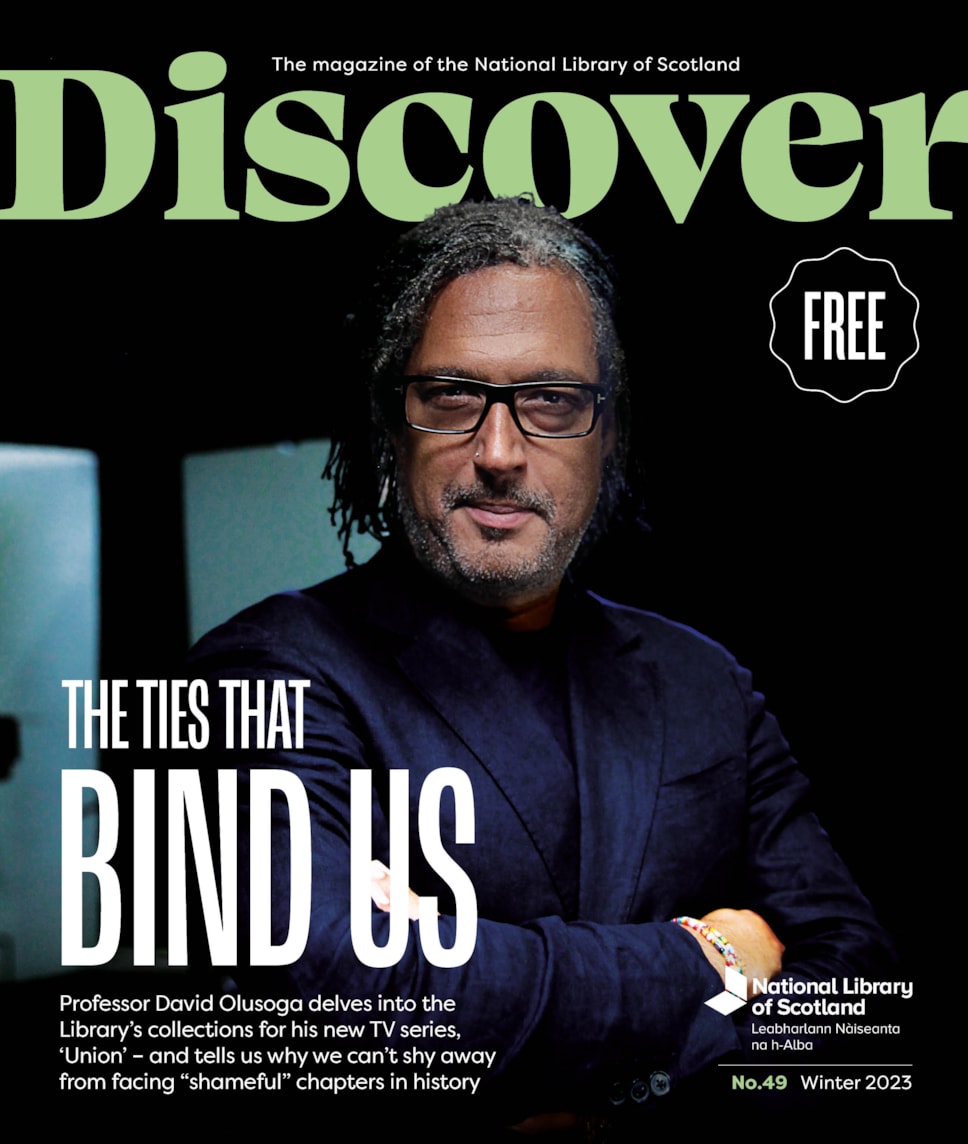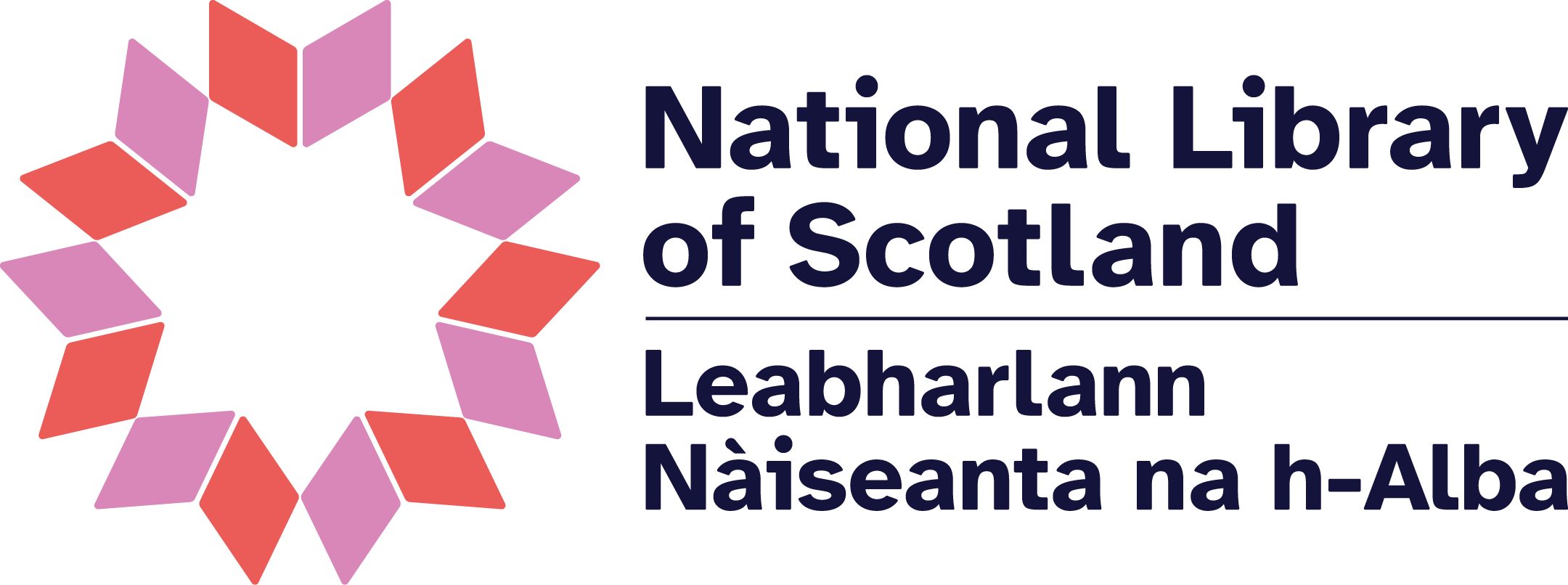
Discover Issue 49, Winter 2023
Excerpt from 'Celebrating our role in TV historian’s BBC series ‘Union’', page 3:
We were thrilled to welcome the Bafta-winning historian, writer and broadcaster Professor David Olusoga to the Library last year and support his research for his latest BBC TV series, ‘Union’. He kindly agreed to tell ‘Discover’ all about the items from our collections that he examined during his time with us, and discussed how the four hour-long episodes of his series delve into the past and present of our Union of four nations.
Professor Olusoga, author of the award-winning book ‘Black and British: A Forgotten History’ also tells us that history is not a “safe space” populated only by heroes and that we should learn from mistakes of the past. During his visit to our George IV Bridge building, he examined our copy of Union Flag designs presented to James VI/I and a ledger of investors to the ill-fated Darien scheme, the failure of which helped bring about the Act of Union of 1707. Read all about his research with us and ‘Union’ on pages 10–13.
Elsewhere, talented young band Duan tell us about how they are bringing traditional Gaelic music to new audiences and why it is important to preserve and grow the language. The band performed at the Library for the opening of our first dual-language exhibition, ‘Sgeul | Story’, and their set was magical. Learn more on pages 18–21.
We also look at the story of mapmaker Joan Blaeu and his famous ‘Atlas Maior’, published in the 1660s. It was the first of its kind and the most expensive book money could buy at the time (pages 26–29). Blaeu’s maps of Scotland can be viewed in our exhibition, ‘Treasures of the National Library of Scotland’.
Our ‘Treasures’ exhibition also now has one of the Hyakumantō Darani on display, and we look at this fascinating item in more detail on pages 14–17. The Hyakumantō Darani, also known as the ‘One Million Pagodas and Darani Prayers’, were a million miniature wooden pagodas containing scrolls with Buddhist prayers, called darani. They were commissioned by the Empress Shōtoku in AD 764 following the suppression of a rebellion. The pagodas and scrolls are thought to be a form of atonement for the deaths caused by the rebellion. The scrolls are among the earliest known printed works and our scroll is the oldest printed item in our collections.
Sometimes the most battered books in our collections have the most interesting provenance. That is certainly the case with one recent acquisition, a pocket Bible once owned by radical martyr John Baird, a key figure of the Radical War of 1820. Read his story, penned by Rare Books Curator Graham Hogg, on pages 22–25.
We’re also happy to unveil our new Scots Scriever and Gàidhlig Storymaker (pages 8–9) and tell you about our annual appeal – supported by Sir Ian Rankin – to help catalogue and curate the archives of Alasdair Gray, George Mackay Brown and James Kelman. We recently acquired more material to add to these archives, and you can help us make these fascinating documents available to the public as soon as possible (pages 6–7).
We also have information about our exhibitions (pages 30–31) and ideas for Christmas gifts from our Library Shop (page 33).
I hope you enjoy these stories.
Amina Shah
National Librarian and Chief Executive
